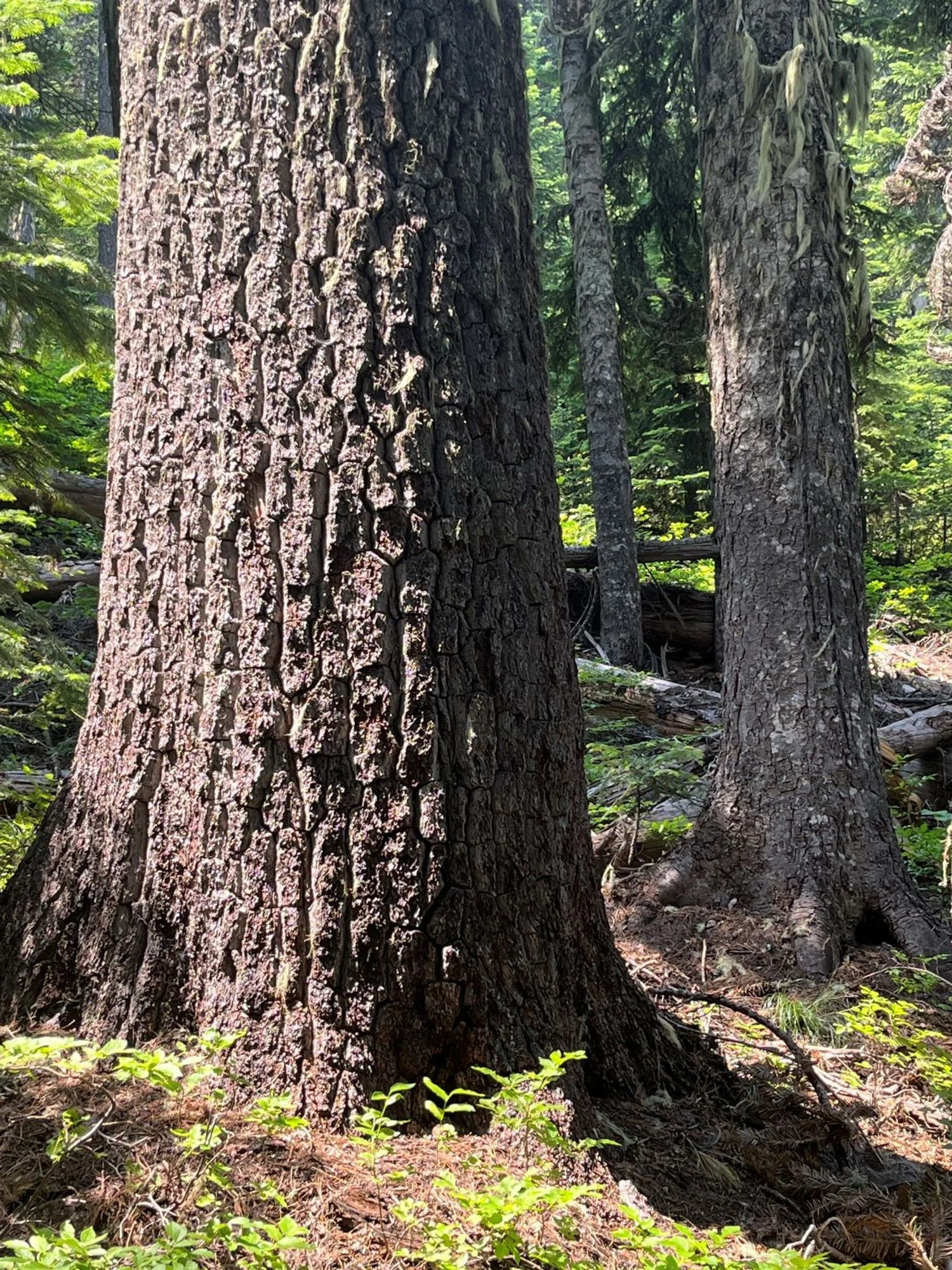
24. Upper Badger Loop
Summary
Length 7 ½ mile loop from Gumjuwac Saddle
Difficulty Moderate to difficult
Season Summer to early autumn
Elevation range 3,560 – 5,220 feet
Human imprint Minimal (Badger Creek Wilderness)
Information Mount Hood National Forest (Barlow Ranger District)
Primary old growth features
Mixed-conifer old growth in an eastside wilderness.
Description
This loop samples the wide diversity of tree species and vegetation types draped across the glacially carved slopes of the upper Badger Creek Wilderness. The portion of the loop within the Gumjuwac Creek watershed also lies within the Gumjuwac-Tolo Research Natural Area (RNA) where long-term plots are established to track composition, growth and mortality trends across these vegetation types. Due to fire exclusion that has allowed dense populations of trees to develop, and to periods of drought, a variety of insect and disease pathogens have created high levels of tree mortality across the wilderness and throughout this loop. Note that the trails in this loop are lightly used and infrequently maintained.
From Gumjuwac Saddle, head downslope to the east into the Badger Creek Wilderness on the Gumjuwac Trail (480). Shortly after leaving the saddle some large Englemann spruce accent an interesting dry meadow complex. The trail descends steeply along Gumjuwac Creek through a diverse species mix of older trees including mountain hemlock, Engelmann spruce, grand fir, Pacific silver fir and occasional western larch. Old Douglas-fir and ponderosa pine mix in on the warmer lower slopes as the trail nears Badger Creek.
Turn right on the Badger Creek Trail (479) approximately 2 ¼ miles from the saddle heading southwest towards the cirque basin holding Badger Lake. Western redcedar makes an appearance and past blowdown is evident in places. Stay to the right (north) of the lake, ignoring paths to the left towards the campground, and intersect the Divide Trail (458) approximately 2 ¼ miles from the Gumjuwac Trail. Take the Divide Trail across the slope to the north closing the loop at Gumjuwac Saddle approximately 3 miles later. The upper portions of this last segment feature western larch, western white pine and noble fir mixing in with mountain hemlock and silver fir. Occasional openings permit views across the valley to the opposite side of the Wilderness.
If you prefer to hike the steeper segment uphill, hike the loop in the opposite direction from that described here.
30 years of change
There has been extensive blowdown and mortality in places.
How to get there
The loop described here starts in Gumjuwac Saddle. The saddle can be reached from the north end of the Bennett Pass Road (FR 3550) near Lookout Mountain. From Highway 35, turn northeast onto the FR 44 (Brooks Meadow Road) about 25 miles south of the town of Hood River (13 ¼ miles north of the Highway 26/Highway 35 junction). Turn right (south) onto FR 4410 after 3 ¾ miles. The junction with FR 3550 is 4 ¾ miles up FR 4410. Hikers can either walk or bike on FR 3550 from the junction to Gumjuwac Saddle (approximately two miles.) Note that FR 3550 is not suitable for driving on this section.
Alternatively, the saddle can be reached via a 2 ½ mile hike (or bike ride) up the Gumjuwac Trail from Highway 35 (see hike 25).
A third option is to start the loop from Badger Lake, but this requires a sturdy high-clearance vehicle as the access road is not suitable for most vehicles.
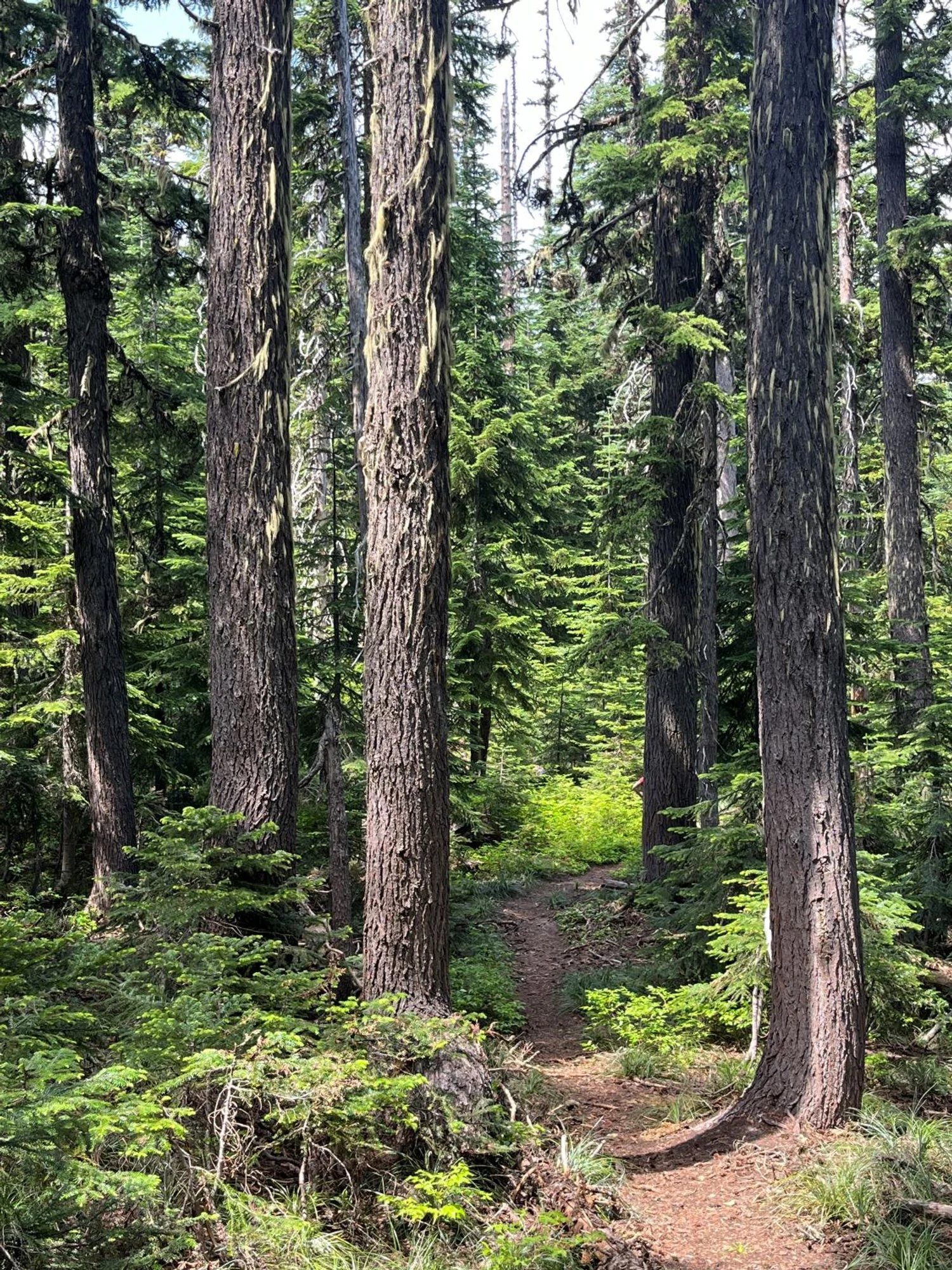
Mountain hemlock

Badger Lake and upper Badger Creek basin
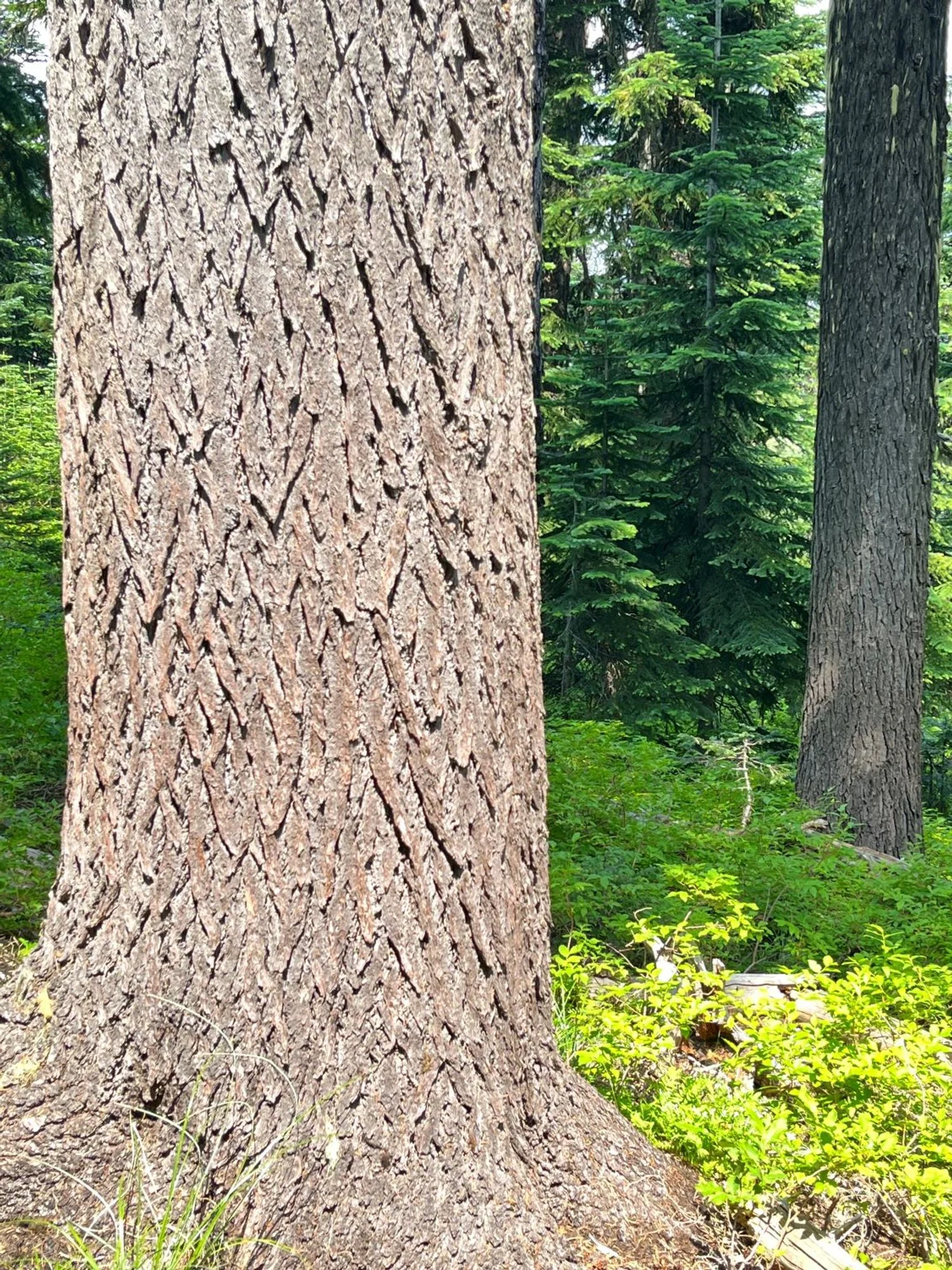
Mountain hemlock
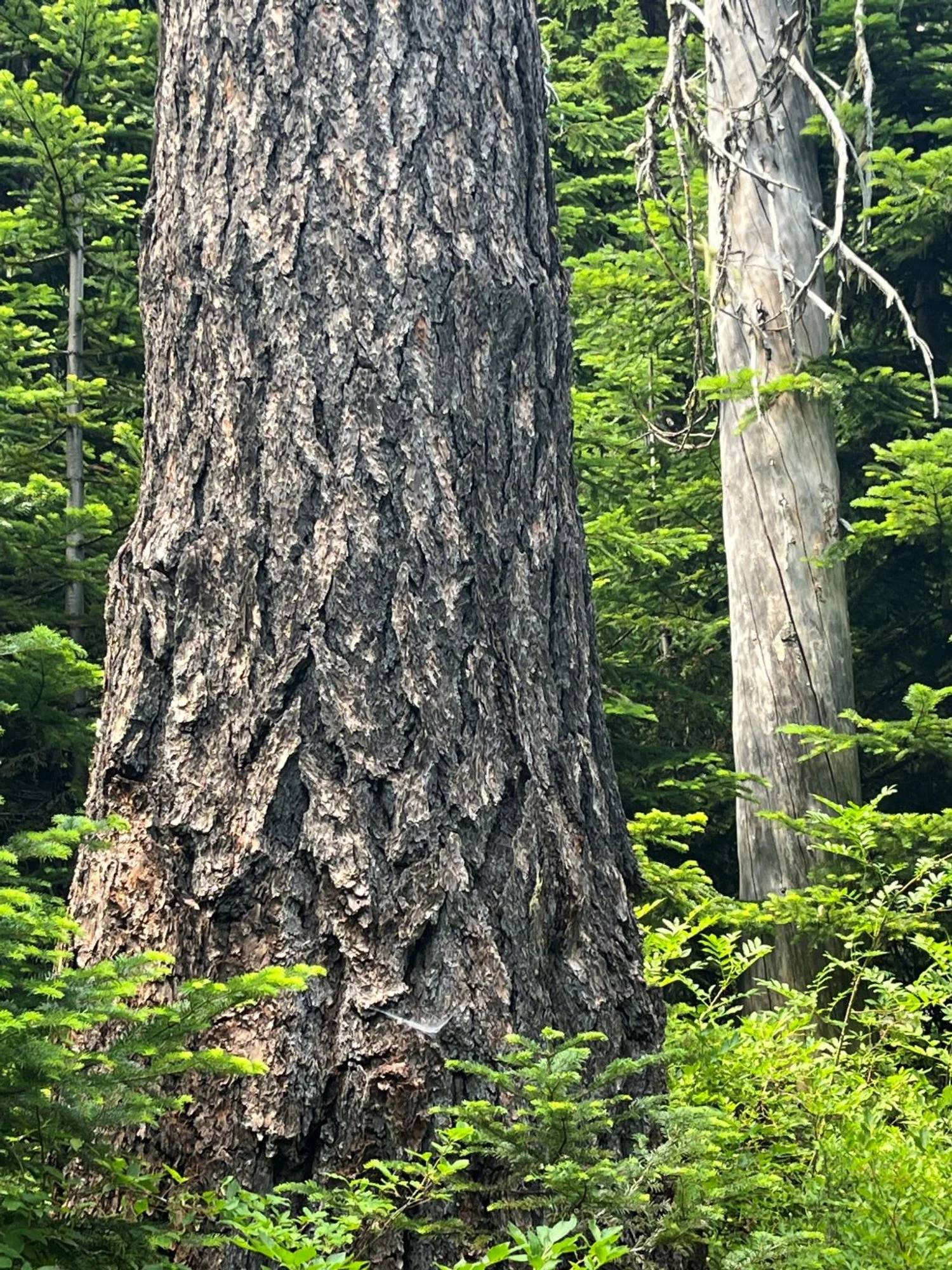
Western larch
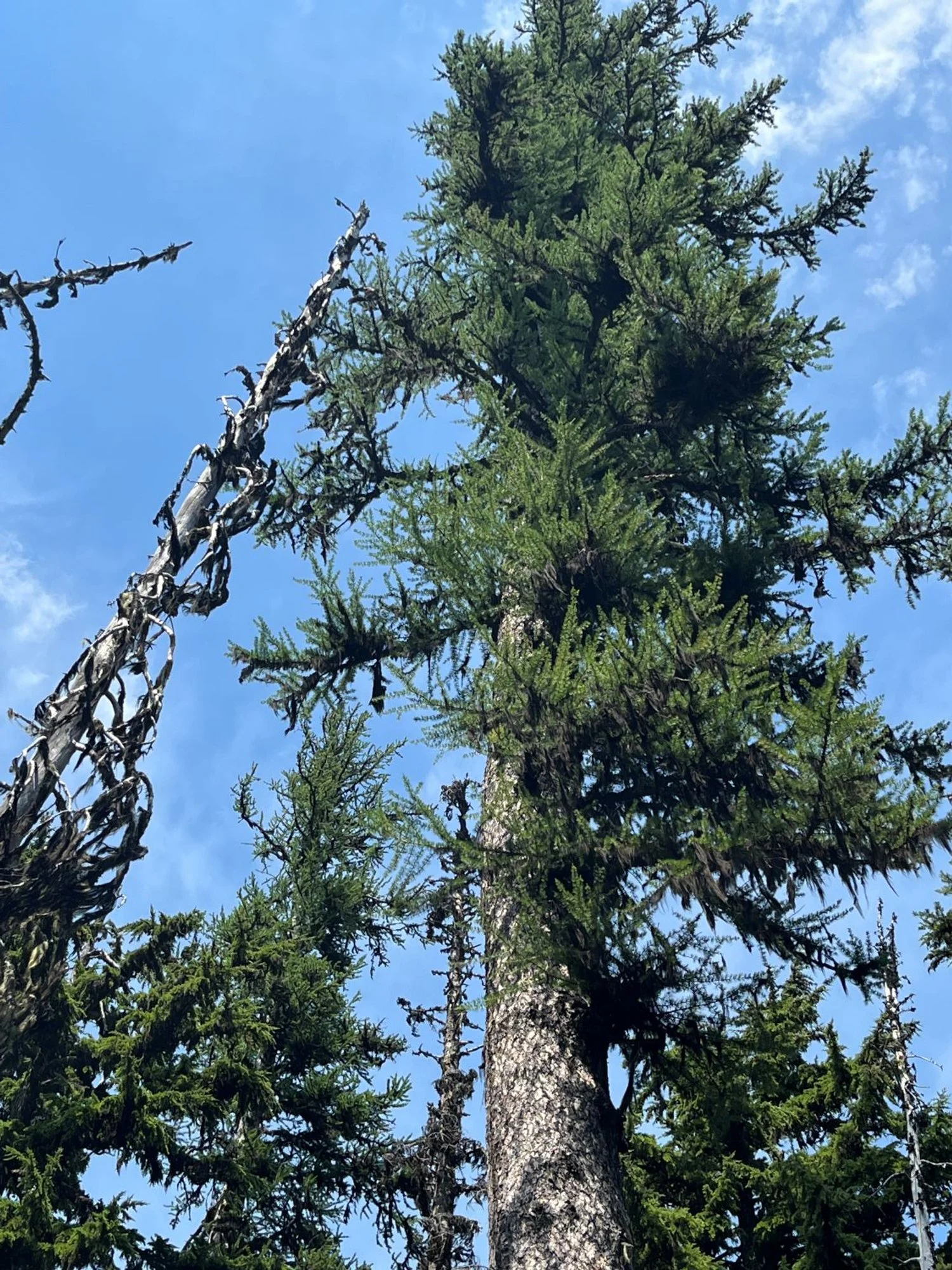
Western larch
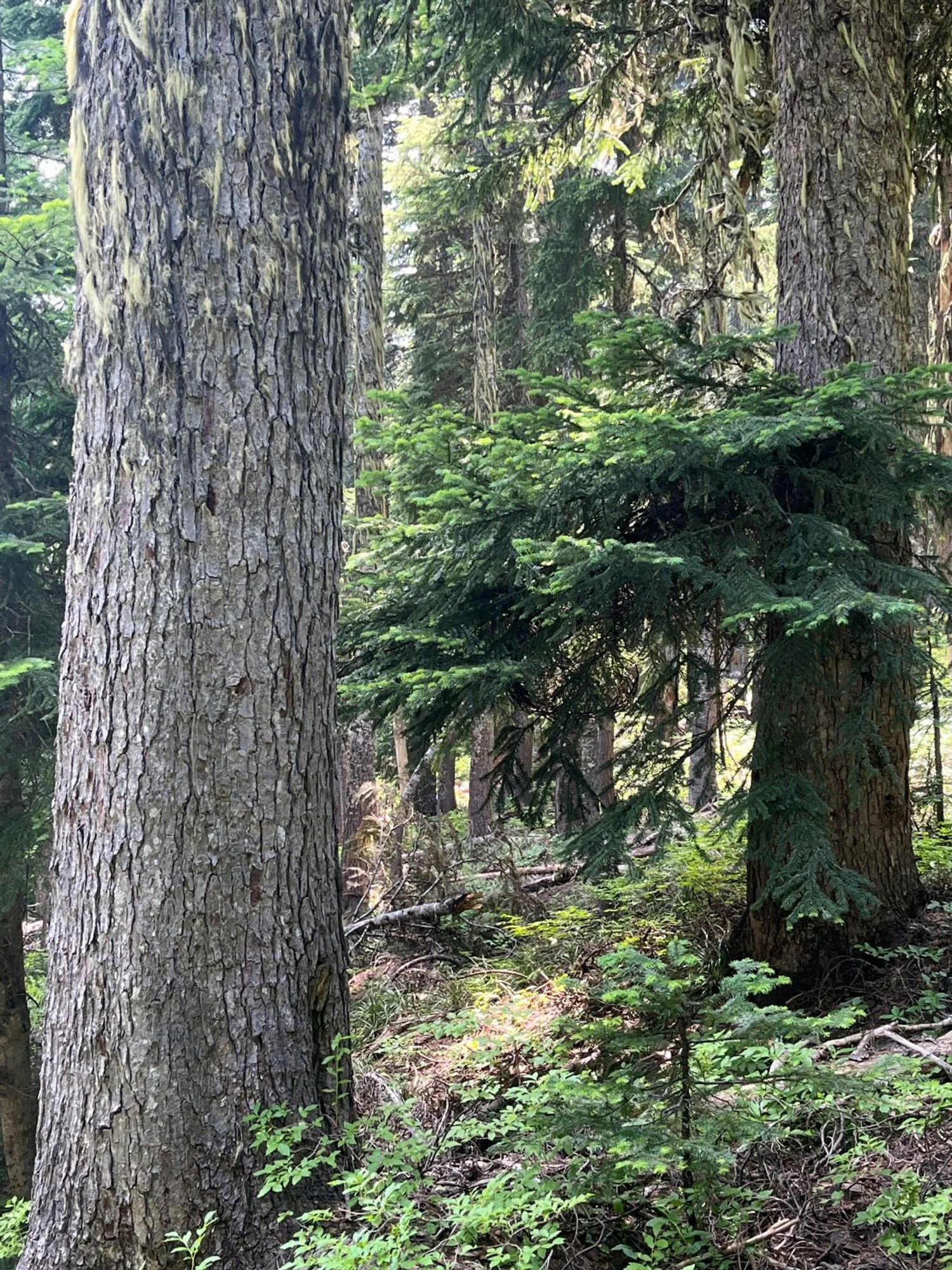
Pacific silver fir

Healthy western white pine
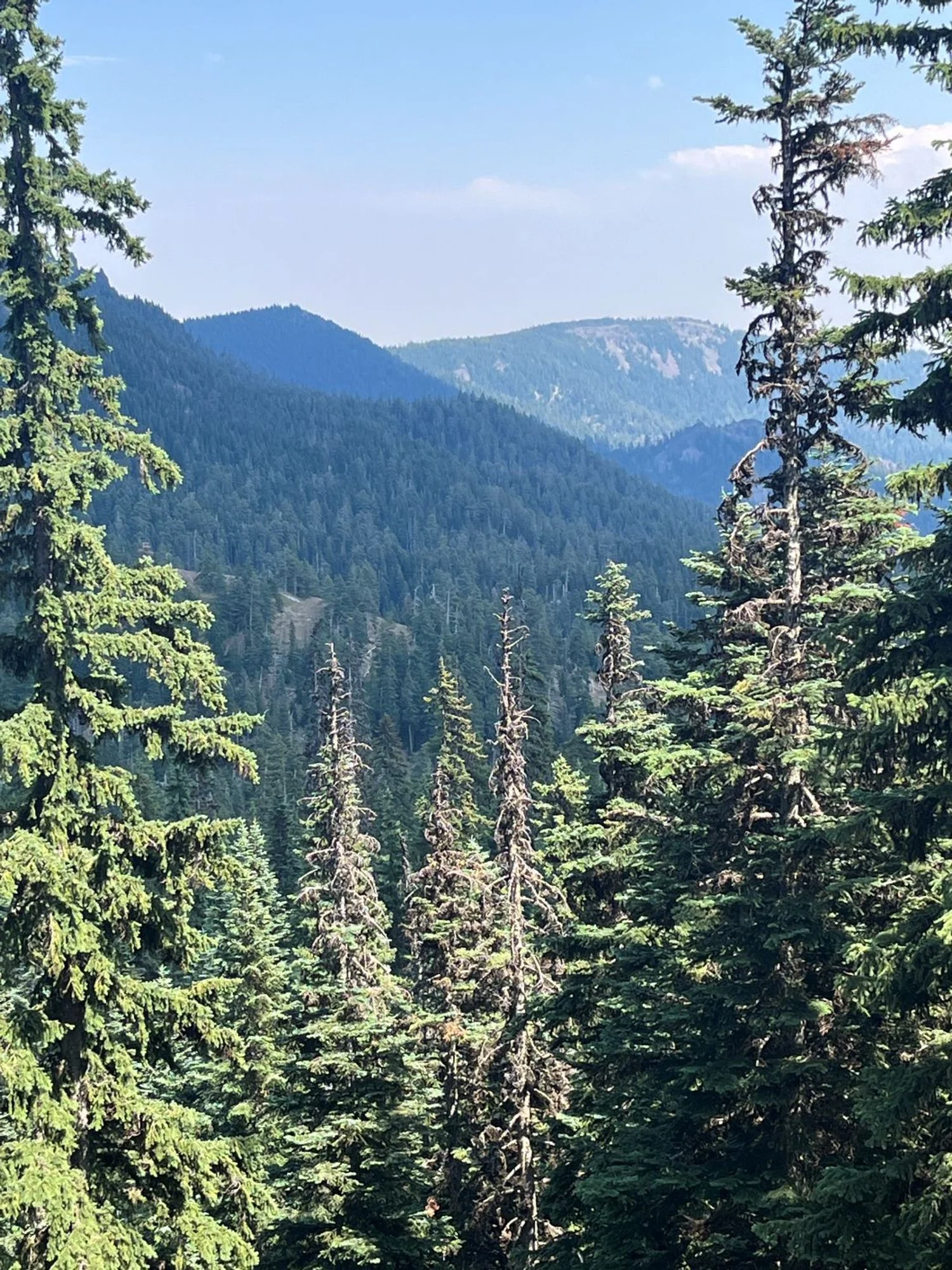
Across the valley to the east
